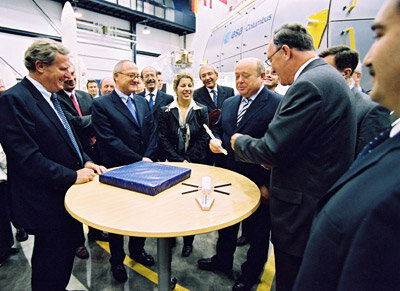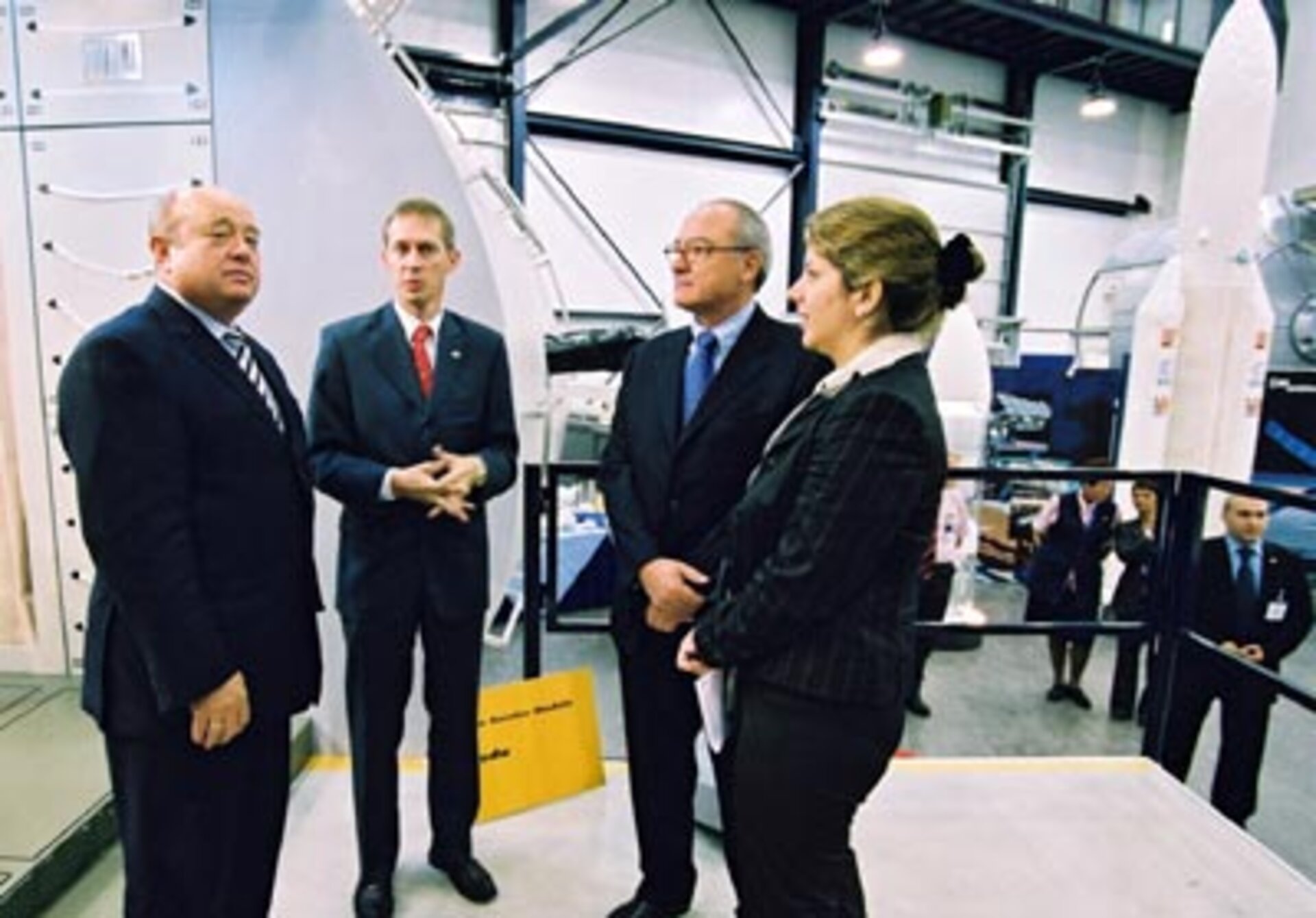European and Russian cooperation in space highlighted by official visit of Russian Prime Minister
Whilst on a state visit to the Netherlands last week, Russian Prime Minister Mikhail Fradkov visited ESA’s European Space Research and Technology Centre (ESTEC), in Noordwijk. ESA Director General Jean-Jacques Dordain and ESA’s Director of Human Spaceflight Jörg Feustel-Büechl presented ESA and the cooperation between Russia and Europe in space.
Jean-Jacques Dordain pointed out that ESA’s cooperation with Russia started in 1986 when ESA and the USSR worked together in the area of space science for an ESA mission to Halley’s comet. Today this cooperation is ongoing and grows further in the areas of space science, human spaceflight and launchers.
Launchers
In the area of launchers, a new launch site is under construction at the European Spaceport in French Guiana for the launch of satellites by Russian Soyuz rockets. The later launch of manned Soyuz spacecraft from this site is also under consideration. ESA’s Launchers Programme and Russia have agreed to cooperate in the development of technologies for ESA’s and Russia’s next generation launcher.
“The cooperation with Russia is a strategic element of ESA’s policy,” said Jean-Jacques Dordain, ESA’s Director General, “and I expect it to become even stronger in the future.”
International Space Station

Jörg Feustel-Büechl focused on the cooperation between Russia and ESA in the International Space Station (ISS) programme, where Russia and Europe are closely working together with the USA, Canada and Japan.
ESA has provided the Data Management System for the Russian Service module Zvezda, which was launched in July 2000. ESA will also provide the European Robotic Arm (ERA) to Russia, which has recently confirmed its plans to launch a Multipurpose Module to the ISS in 2007. This module will be the carrier and the home base for ERA. ESA’s Automated Transfer Vehicle, planned for launch on Ariane-5 in the second half of 2005, uses Russian docking technology to dock to the Russian ISS Service Module Zvezda.
Soyuz missions
In cooperation with Russia five ESA astronauts have already flown on Russian Soyuz spacecraft to visit the ISS. Two more Soyuz missions to the ISS with ESA astronauts are under negotiation with the Russian partners; a 10-day mission in April 2005 and a longer duration mission in October 2005. Mr Feustel-Büechl underlined that out of 38 missions to the ISS that have taken place to date, 19 involved elements of ESA/Russian cooperation.





